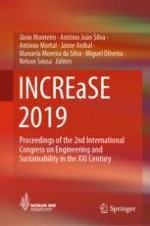This book contains the proceedings of the INternational CongRess on Engineering and Sustainability in the XXI cEntury – INCREaSE 2019, which was held in Faro, Portugal, from October 09 to 11, 2019.
The book promotes a multidisciplinary approach to sustainable development, exploring a number of transversal challenges. Among other topics it discusses Climate Changes and Environmental Protection; Renewable Energy; Energy Efficiency in Buildings; Green Governance and Mobility; Water for Ecosystem and Society; Healthy Food; Sustainable Construction; and Sustainable Tourism, offering perspectives from civil, electronics, mechanical, and food engineering.
